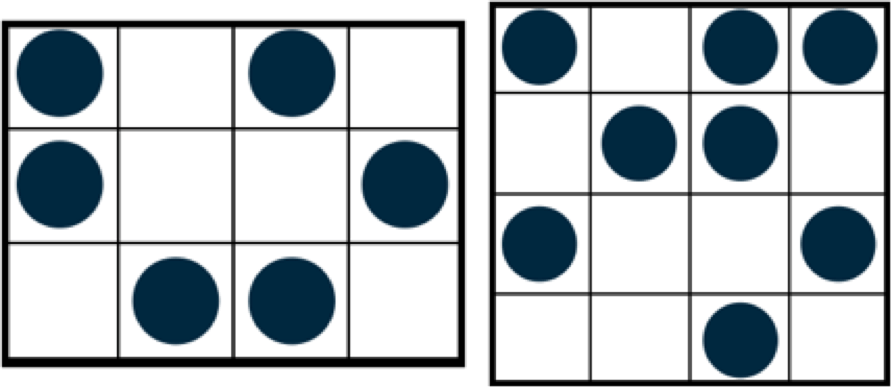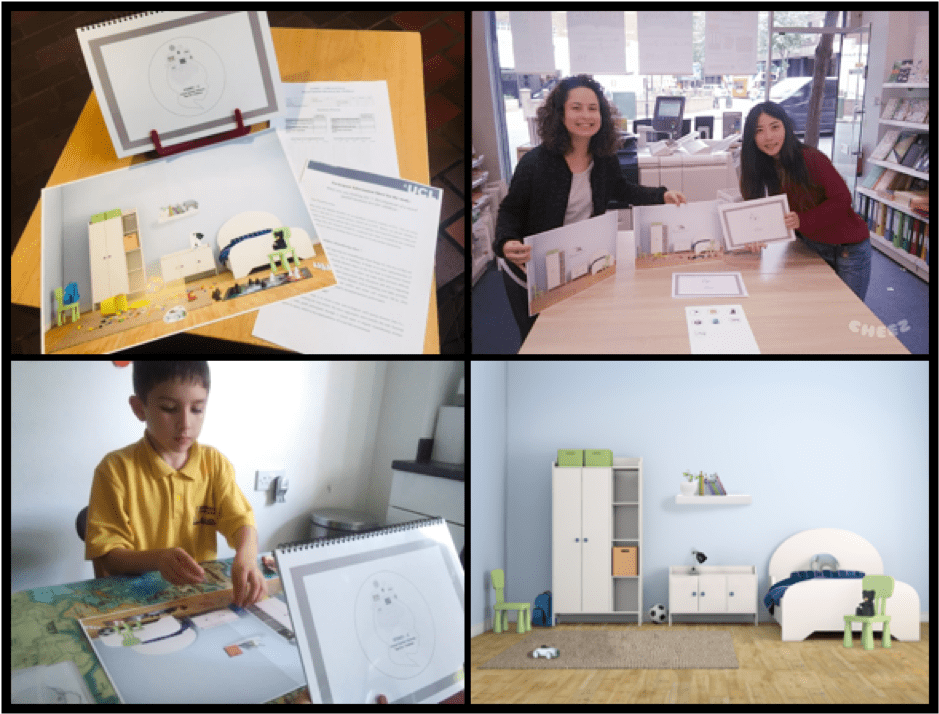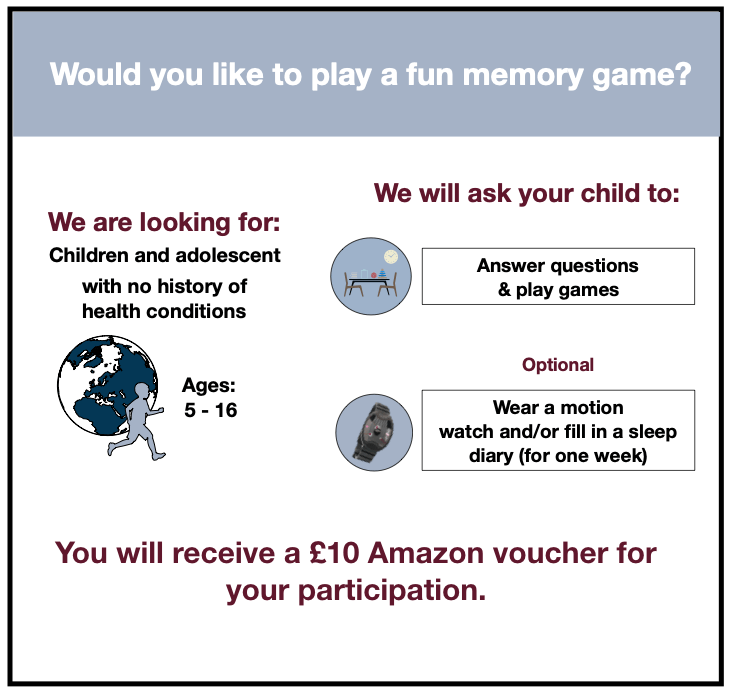UCL Grand Challenge (2018- 2019): What are you looking for? Development of a novel spatial memory test for children.
By melanie.koelbel.15, on 16 October 2019
Written by Melanie Kölbel, 3rd year PhD student at the Great Ormond Street Institute of Child Health (GOSICH), researching sleep in sickle cell anaemia and Mina Jeon, 3rd year PhD student in the department of Psychology and Human Development at the Institute of Education (IoE), researching sleep and cognition in neurotypical and autistic children. Both are part of the Lifespan Learning and Sleep Laboratory (LILAS) at UCL.
Tweet:
UCL Grand Challenges: @UCL_GC
Lifespan Learning and Sleep Laboratory (LILAS): @LILAS_Lab
Mina Jeon:@MinaJeon12
Think about the following. How many times have you asked yourself or your child(ren)?
- “Where is my/your […] ?“ (<- insert any objects that you or your child(ren) misplace frequently in the brackets).
- “I know I put […] here?” or “Don’t you remember where you put […] ?”(<- insert any objects that you misplace frequently in the brackets).
- “Am I lost again?” I could swear it was that way.
How does a better spatial memory help children? Certainly, it helps them to be successful in STEM.
In the early years, motor development enables a child to explore the world around them. Exploration of the new world helps the child to develop the relationship between objects and places and, therefore, the maturation of spatial cognition (Postma & Ham, 2016). Already at the age of 3-months, young children show an understanding of object misplacement (Hayne et al., 1991). At 4-years of age, children are able to use landmarks as clues to find their way around (Waismeyer & Jacobs, 2013). Spatial cognition has been shown to play an important role in the development of creativity and aids successful expertise development in the domains of STEM (science, technology, engineering, and mathematics) (Kell et al., 2013; Lubinski, 2010; Wai, Lubinski & Benbow, 2009). Unfortunately, it is often neglected in educational assessments (Kell & Lubinski, 2013).
Have you seen my dots?
Have you or your child looked for dots recently? One of the tests available to assess spatial memory in children is the Dot Locations Test in the Children’s Memory Scale (CMS) (Cohen, 1997). The child has to remember the locations of either 6 or 8 dots over three trials. After a learning stage, the dots need to be recalled on two occasions: (1) immediate after a distractor was shown and (2) after a long delay (20 ~ 30 minutes) to assess the child’s visual spatial memory abilities. The test appears to have a low ecological validity, since it is less generalizable to a real-life setting. From our current experience the test does not seem to be as useful for typical developing children as for children who have an obvious visual or spatial memory difficulties and therefore might underestimate a child’s true performance, especially during the early years.

Pictorial representation of the Dots Location Task for children at the ages of 5-8 years (6 dots) and 9 – 16 years (8 dots) in the Children’s Memory Scale (CMS).
Why not develop a new spatial memory task that is more ecologically valid?
We applied for the UCL Grand Challenges Doctoral Students Small Grants Scheme to receive funding to create a fun, ecologically valid and easy to administer test for children to assess their spatial memory. We decided to create a booklet that shows two scenes of an organised and disorganised bedroom with different objects in it. The test follows the Dot Locations principle, whereby the child has to remember the locations of 7 target objects over three trials. After a learning phase, the objects need to be recalled on two occasions: (1) immediate after a distractor was shown and (2) after a long delay (20 ~ 30 minutes). The reason behind our choice of organised and disorganised bedroom scenes is that the bedroom is a place where children keep their belongings/possessions and are generally most familiar with. The organisation of the bedroom could give us a better understanding on how objects are best remembered depending on the environment they are in. The CMS lacks this kind of information. An important implication of the newly developed visual spatial memory test is that by knowing how a child can remember things in either an organised and/or disorganised way, it can help us to create targeted future interventions.

(1) Top left: VISMO-C with Manual, stimulus, record form and consent form; (2) Top right: Mina and myself after receiving the first copy of the test; (3) Down left: A child taking part in the assessment and (4) Down right: VISMO-C organised bedroom scene.
Challenge accepted: The challenge within the challenge.
The first challenge we encountered was the design of the test. We had the idea and framework drafted, but we had no artistic knowledge and skills. Having the ability to draw like a 5-year-old clearly does not help. Certainly, it is great to have lots of ideas, but if you are missing the skills to bring these to life, it really puts a break on your work. We didn’t have time to spend hours learning the methods to design the room professionally. Luckily, a great friend and colleague, who is working as a freelancer in design, was able to help us out.
Once this was sorted, we faced the challenge of recruitment. We made flyers, which we handed out on high streets, parks and shopping centres, we even contacted schools, but responses were low. Often kids would be excited if we approached families and were willing to take part, but parents were more reluctant and never got in contact with us. What really helped in the end was the willingness of colleagues and families we work with to spread the word and to engage their friends in this research. Part of the research also assesses their children’s sleep and general cognitive abilities and parents were interested in finding this out too.
The challenge that still persists is the assessment of a child’s spatial memory skill in a real-life setting. It was our goal to take children to the British Museum for an hour and to walk a maze with them to find out if they can retrieve the way to get to the targeted masterpieces. However, parents often could not find the time to come in. Unexpected closures of our planned routes within the museum and crowdedness made it impossible to fulfil this part of the challenge. In psychology, history taking is very important and can aid the understanding of underlying problems (Postma & Ham, 2016). Therefore, we aim to ask parents specific questions regarding their understanding of their child’s daily spatial memory performance. Working together on this project has shown us that one should not be afraid to ask, and that teamwork can combine multiple skills and make something incomplete complete. We are excited to start analysing the data soon and hope that the VISMO-C will be a useful measurement to test a child’s spatial memory performances in the future, especially in the early years.
The recruitment is still ongoing and your child will receive a £10 voucher for participation.
Please get in contact with Mina Jeon (mina.jeon.12@ucl.ac.uk) and Melanie Kölbel (melanie.koelbel.15@ucl.ac.uk).
Acknowledgement:
- UCL and the UCL Grand Challenge Scheme for providing us with the funding to make the project possible.
- Special thanks to the continuous support of our supervisors Professor Fenella Kirham and Dr. Dagmara Dimitriou
- Katja Dallmann for helping us designing the rooms and objects for VISMO-C.
- Celia Brenchley, for her advice and valued experience in educational psychology.
- Special thanks to all the families and children who have played the game with us.
References:
Cohen, M. J. (1997). Children’s memory scale. Administration manual. San Antonio, Texas: The Psychological Corporation.
Hayne, H., Rovee-Collier, C., & Borza, M. A. (1991). Infant memory for place information. Memory & Cognition, 19(4), 378–386.
Kell, H. J., Lubinski, D., Benbow, C. P., & Steiger, J. H. (2013). Creativity and technical innovation: Spatial ability’s unique role. Psychological science, 24(9), 1831-1836.
Kell, H. and Lubinski, D. (2013). Spatial Ability: A Neglected Talent in Educational and Occupational Settings. Roeper Review, 35(4), pp.219-230.
Lubinski, D. (2010). Spatial ability and STEM: A sleeping giant for talent identification and development. Personality and Individual Differences, 49(4), pp.344-351.
Postma, A. and Ham, I. (2016). Neuropsychology of Space Spatial Functions of the Human Brain. Amsterdam: Academic Press, pp.309-352.
Wai, J., Lubinski, D. and Benbow, C. (2009). Spatial ability for STEM domains: Aligning over 50 years of cumulative psychological knowledge solidifies its importance. Journal of Educational Psychology, 101(4), pp.817-835.
Waismeyer, A. S., & Jacobs, L. F. (2013). The emergence of flexible spatial strategies in young children. Developmental Psychology, 49(2), 232–242.
2 Responses to “UCL Grand Challenge (2018- 2019): What are you looking for? Development of a novel spatial memory test for children.”
- 1
-
2
Patty Black wrote on 24 May 2024:
The development of a novel spatial memory test for children is a groundbreaking advancement in cognitive research. Advanced writers exploring this topic provide crucial insights into designing effective assessment tools. Studying this can help educators and psychologists better understand and support children’s spatial memory development, ultimately contributing to enhanced learning strategies and improved educational outcomes.
 Close
Close




The development of a novel spatial memory test for children is a groundbreaking advancement in cognitive research. Advanced writers exploring this topic provide crucial insights into designing effective assessment tools. Studying this can help educators and psychologists better understand and support children’s spatial memory development, ultimately contributing to enhanced learning strategies and improved educational outcomes.